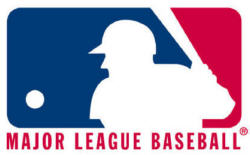 We are in one of the most exciting periods of the year for baseball aficionados. With the culmination of the World Series, free-agency is quickly approaching. Use this guide so that you do not become confused with how all the events go down. Free-agency’s implications go well beyond the signing of those who become eligible.
We are in one of the most exciting periods of the year for baseball aficionados. With the culmination of the World Series, free-agency is quickly approaching. Use this guide so that you do not become confused with how all the events go down. Free-agency’s implications go well beyond the signing of those who become eligible.
Article XX of the MLB Collective Bargaining Agreement deals with the Reserve System. Paragraph B specifically highlights Free Agency. Any player with six or more years of MLB service who is not under contract for the following season may become a free-agent. There is a procedure that players and their agents must follow. A Player eligible to become a free-agent may give notice of his election of free agency within the 15-day period beginning on October 15 (or the day following the last game of the World Series, whichever is later).
The former club of a free-agent may offer arbitration by December 1 as long as that player has not yet signed a contract. Only if the former team offers arbitration and the free-agent rejects and signs with another club at any time or he flat out signs with another team by December 1 minus the arbitration offer, may that team be compensated if said player signs elsewhere.
The Elias Sports Bureau is the official stat tracker for Major League Baseball, among almost every other major professional American sport. Every year, ESB ranks National and American League players and places them into three categories. The top 20% are considered Type A players, next 20% are type B, and the remaining players are labeled Type C. ESB does not compile these rankings just for fun. The MLB uses the results to determine compensation picks based on free-agent movement. In compensation cases:
- Type A free-agent: Former team will be compensated with the signing team’s first round draft pick and a supplemental first-round pick in the following Amateur Draft. If the signing team finished the previous season in the bottom half of the standings, it will keep its first round pick, but give up a second round pick instead. The former team will still get a supplemental round pick either way. Additionally, the signing team does not give up a pick awarded as compensation for failing to sign a player in the previous draft.
- Type B free agent: Former team only receives a supplemental first-round pick.
- No compensatory picks are granted to an organization for Type C free-agents who sign elsewhere.
Since the World Series ended after October 15th, that date will be used to determine the free-agency declaration window (it is November 14). Eligible players have fifteen days from last Thursday to declare for free-agency. At that point, we will know how many Type A and Type B players will be in the free-agent pool. This information is important, because clubs are limited in the number of Type A and Type B players they can sign based on the number of those types of players who elect to enter free-agency. From the Quota section of the Collective Bargaining Agreement:
If there are 14 or less such Players, no Club may sign more than one Type A or B Player. If there are from 15 to 38 such Players, no Club may sign more than two Type A or B Players. If there are from 39 to 62 such Players, no Club may sign more than three Type A or B Players. If there are more than 62 such Players, the Club quotas shall be increased accordingly. There shall be no restrictions on the number of unranked Players that a Club may sign to contracts.
The caveat:
A Club shall be eligible to sign at least as many Type A and B Players as it may have lost through Players having become free agents under this Section at the close of the season just concluded.
One thing is certain: #1 on the ESB rankings, Mark Teixeira, has declared for free-agent status. That is one Type A player to add to the total. Here are the leaders by position and league:
American League
• First base: Mark Texeira, Angels (98.889)
• Outfield: Magglio Ordonez, Tigers (96.316)
• Designated hitter: David Ortiz, Red Sox (94.545)
• Catcher: Joe Mauer, Twins (89.401)
• Second base: Dustin Pedroia, Red Sox (85.714)
• Shortstop: Michael Young, Rangers (88.0)
• Third base: Alex Rodriguez, Yankees (95.031)
• Starting pitcher: Roy Halladay, Blue Jays (95.058)
National League
• First base: Albert Pujols, Cardinals (95.385)
• Outfield: Matt Holliday, Rockies (98.125)
• Catcher: Russell Martin, Dodgers (85.328)
• Second base: Chase Utley, Phillies (92.411)
• Shortstop: Jimmy Rollins, Phillies (85.714)
• Third base: David Wright, Mets (89.560)
• Reliever: Takashi Saito, Dodgers (88.678)
• Starting pitcher: C.C. Sabathia, Brewers (98.110)
Now let the games begin.
2 replies on “A Crash Course On MLB Free Agency”
[…] MLB Free Agency Scoop < Sports Agent Blog […]
[…] like the Orioles, Blue Jays, and Yankees will not be able to offer Manny a deal until November 14 (see this post for more free-agent info). Tags: los angeles dodgers, manny […]